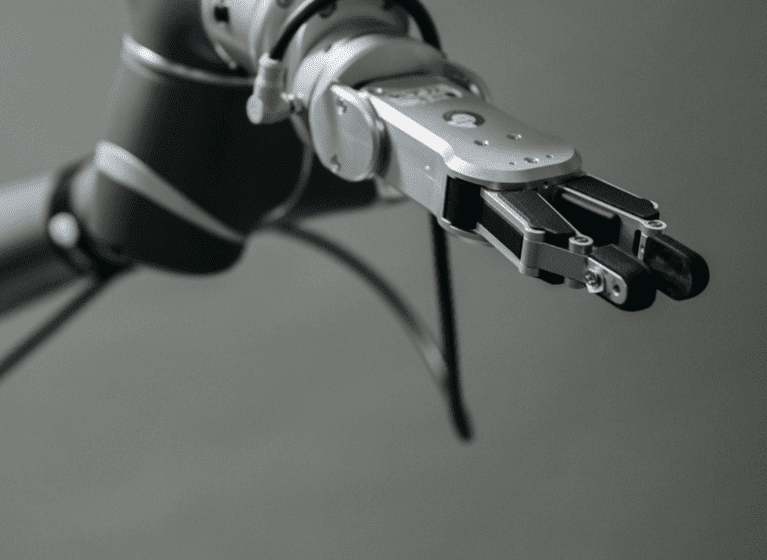Late last week, the Federal Court handed down another judgement regarding patentable subject matter in Australia (Aristocrat Technologies v Commissioner of Patents). This time, the subject matter was a computer-implemented game or more particularly an electronic gaming machine.
Over the last six years (ever since the Full Federal Court decision in Research Affiliates1), the Australian Patent Office has been routinely rejecting patent applications directed to gaming machines2, arguing that the gaming machines themselves are generic and therefore the inventions in these patent applications lie in the actual games being played on the machines, which the Patent Office has in turn been classifying as abstract ideas/mere schemes.
In essence, this Federal Court judgement of Justice Burley takes issue with such rejections and in particular with the Patent Office’s approach in determining the substance of the invention. Given there are more than 900 gaming-related patent applications pending at the Patent office, and Aristocrat Technologies Australia (Pty) Ltd (Aristocrat) is one of Australia’s biggest patent filers, this is an important decision in this field. Further, given this judgement has issued hot on the heels of the recent Full Federal Court judgement in in Rokt and draws on some of the principles highlighted in Rokt, it may be important for other types of computer-implemented inventions.
Background
Four innovation patents (related to systems and methods for providing a feature game) owned by Aristocrat were considered in this case. Broadly speaking, the inventions in these four patents are directed to electronic slot machines that monitor play of a base game and trigger a feature game in response to a trigger event occurring in the base game. During the feature game, the slot machine retains configurable symbols from a first set of reels on the display, replaces non-configurable symbols with symbols from a second set of reels, and displays the selected symbols.
These patents were rejected by a Delegate of the Patent Office for reciting subject matter that was unsuitable for a patent. In his concluding observations, the Delegate said the inventions were simply for games and game rules, which he classified as schemes3.
Burley J identified the central question as being whether a claim to an electronic gaming machine (EGM) which includes a combination of physical parts and computer software to produce a particular outcome in the form of gameplay, is a manner of manufacture (i.e., patentable subject matter)4.
Submissions
Aristocrat’s submissions were simple – the inventions are directed to electronic gaming machines having particular hardware and software components which provide for a feature game having specific characteristics5. Machines are not abstract ideas or mere schemes.
The Commissioner submitted that the inventions were in substance directed to schemes or sets of rules for carrying out games6. Further, the Commissioner argued that the schemes were implemented using generic computer technology and the inventions made no technical contribution in the way the generic machines having standard hardware and software components carried out the schemes and the inventions made no improvements in the operation or functionality of the machines7.
Consideration
In RPL Central8 and more recently in Rokt, the Full Federal Court provided guidance somewhat akin to the Alice two-step test:
A claimed invention must be examined to ascertain whether it is in substance a scheme or plan or whether it can broadly be described as an improvement in computer technology. The basis for the analysis starts with the fact that a business method, or mere scheme, is not, per se, patentable. The fact that it is a scheme or business method does not exclude it from properly being the subject of letters patent, but it must be more than that. There must be more than an abstract idea; it must involve the creation of an artificial state of affairs where the computer is integral to the invention, rather than a mere tool in which the invention is performed. Where the claimed invention is to a computerised business method, the invention must lie in that computerisation. It is not a patentable invention simply to “put” a business method “into” a computer to implement the business method using the computer for its well- known and understood functions.
In the present case, Burley J drew on the above passage to provide the following clear exposition of the two step test (numbering inserted for clarity):
“The reasoning in the cases mentioned in [88] above involves an initial question
(1) of whether the claimed invention is for a mere scheme or business method of the type that is not the proper subject matter of a grant of letters patent. Once that question is answered in the affirmative, the subsequent inquiry becomes
(2) whether the computer-implemented method is one where invention lay in the computerisation of the method, or whether the language of the claim involves (to use the language employed in Rokt at [84]) “merely plugging an unpatentable scheme into a computer”. That second inquiry requires consideration of whether the invention claimed involved the creation of an artificial state of affairs where the computer was integral to the invention, rather than a mere tool in which the invention was performed9.”
In Rokt, the Full Federal Court also provided further clarification for identifying the substance of the invention, which according to the Full Federal Court is done based on established principles of construction – i.e., by construing the claims in light of the specification as a whole and the relevant art10.
Using these principles, Burley J concluded that the inventions did not meet step 1 of the test above (i.e. they were not directed to schemes or plans, but to new and useful gaming machines) and therefore there was no reason to assess whether the inventions met the requirements of the second step. In particular, he based this conclusion on a proper construction of the claims without excluding any features of the claimed invention even though some features were individually known or common in electronic gaming machines.
Burley J found support for his conclusion in a 2015 Federal Court decision (Aristocrat v Konami), where a similar electronic gaming machine was found to be a manner of manufacture. In that case, Nicholas J (who was on the Bench in all four recent Full Federal Court decision on patentability of business methods/schemes – i.e., Research Affiliates, RPL Central, Encompass, and Rokt) concluded that the inventions were not “mere ideas” but “new and useful gaming machines and new and useful methods of operation producing new and improved results”.
Issues with patent office practice
Burley J appeared to have two main issues with the Commissioner’s submissions. These issues have also arisen regularly in prosecution before the Patent Office in recent years.
- Incorrect approach in characterizing the invention – He noted that the Commissioner first identified an inventive concept and then determined whether that inventive concept was a scheme. It has become common practice at the Patent Office to identify the “inventive concept” of an invention, which is often based on an elimination of features identified in prior art documents or considered “generic” by the Patent Office. When the Patent Office doesn’t identify the inventive concept, it determines whether the invention passes step 2 mentioned above to determine if the invention is a scheme or not.
Burley J warned that identifying an “inventive concept” and then utilizing that concept to conclude that the invention is a mere scheme or abstract idea is an incorrect way of identifying the substance of the invention as it essentially ‘puts the cart before the horse’.
- Mechanical v virtual reels – During the trial, the Commissioner agreed that if the gaming machines of the claimed inventions had been implemented using mechanical reels, the inventions would no doubt be patentable. The Patent Office had made similar remarks in a 2016 decision in Konami Gaming, Inc., where the hearing officer had found a similar invention to be a mere scheme and had placed some weight on the fact that the reels were virtual as opposed to mechanical (see Konami at 37 and 40).
Burley J said he couldn’t understand why the development of a gaming machine that uses efficiencies of electronic technology (i.e., virtual reels) would disqualify an otherwise patentable invention from patent eligibility. He said such an approach would have been antithetical to the encouragement of invention and innovation.
Although this decision is in relation to electronic gaming machines, it is of potential significance to a range of computer implemented inventions and in particular to the manner in which these inventions are assessed by the Patent Office. It remains to be seen if this decision and Rokt will result in the Patent Office changing its practice in identifying the substance of the invention. Even in the most recent APO decision (Gilbarco Inc.), the Delegate appears to determine the contribution made by the invention to the art (in comparison to a prior art reference) to determine its substance. Although in that case the Delegate found the invention to be directed to patentable subject matter, he appears to have reached this conclusion based on identification of the substance of the invention, contrary to the manner suggested by Burley J.
The Patent Office has until 3 July to appeal this judgement to the Full Federal Court.
1 Research Affiliates LLC v Commissioner of Patents [2014] FCAFC 150
2 See Aristocrat Technologies Australia Pty Limited [2018] APO 45, Elot, Inc. [2017] APO 55, Aristocrat Technologies Australia Pty Limited [2017] APO 1, Konami Gaming, Inc. [2016] APO 46
3 See Aristocrat Technologies Australia Pty Limited v Commissioner of Patents [2020] FCA 778 at 1
4 Ibid
5 See Aristocrat Technologies Australia Pty Limited v Commissioner of Patents [2020] FCA 778 at 75
6 See Aristocrat Technologies Australia Pty Limited v Commissioner of Patents [2020] FCA 778 at 78
7 See Aristocrat Technologies Australia Pty Limited v Commissioner of Patents [2020] FCA 778 at 79
8 Commissioner of Patents v RPL Central Pty Ltd [2015] FCAFC 177 at 96
9 See Aristocrat Technologies Australia Pty Limited v Commissioner of Patents [2020] FCA 778 at 91
10 See Commissioner of Patents v Rokt at 67-68







